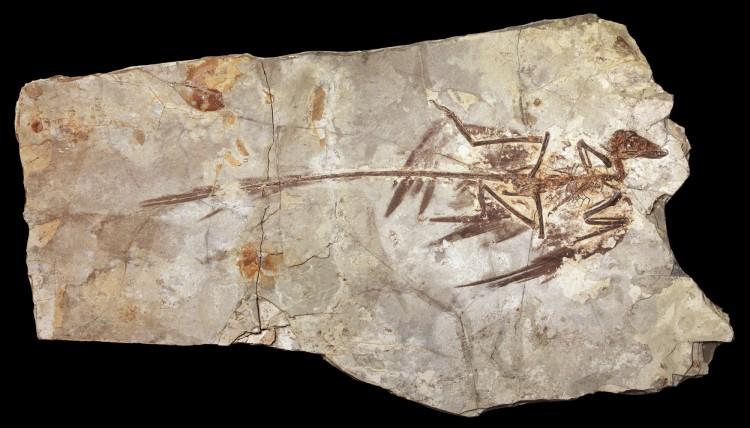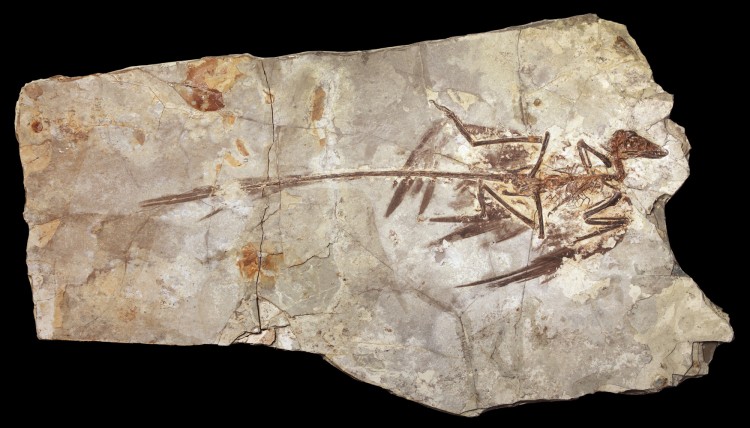The pigeon-sized dinosaur Microraptor had glossy blue-black feathers, and probably used them for social signaling, according to new research published in Science on March 9.
This non-avian reptile had a wing on each limb, and lived about 130 million years ago during the Cretaceous Period. Despite looking anatomically similar to a bird, it is classified as a dromaeosaur along with Velociraptor.
An international team of scientists compared the shape of fossilized Microraptor melanosomes–cell structures that contain pigments in feathers–with those of various birds to determine the dinosaur’s feather color.
Melanosomes are typically round or cigar-shaped with around 100 of these structures spanning the width of a human hair. When stacked in layers, they cause iridescence, which is widespread in modern birds, and often important in displays. Microraptor is the earliest known creature to have possessed iridescent plumage.
“This study gives us an unprecedented glimpse at what this animal looked like when it was alive,” said study co-author Mark Norell, chair of the American Museum of Natural History’s Division of Paleontology, in a press release.
“There’s been a lot of speculation about how the feathers of Microraptor were oriented and whether they formed airfoils for flight or whether they had to do with sexual display,“ he added. ”So while we’ve nailed down what color this animal was, even more importantly, we’ve determined that Microraptor, like many modern birds, most likely used its ornate feathering to give visual social signals.”
As well as being used for display for courtship and deterring rivals, the feathers of modern birds have other uses, including flight and thermoregulation. Microraptor was previously thought to have been active at night, but existing nocturnal birds do not have dark shiny feathers.
“With numerous fossil discoveries of birds and flowered plants, we knew that the Cretaceous was a colorful world, but now we’ve further enhanced that view with Microraptor as the first dinosaur to show iridescent color,” said study co-author Ke-Qin Gao at Peking University, Beijing, in the release.
“Just a few years ago it would have been inconceivable for us to have imagined doing a study like this.”
The team also studied Microraptor’s tail fan, which they believe was probably not aerodynamic in function, but rather was used for attracting mates and other social displays.
“Most aspects of early dinosaur feathering continue to be interpreted as fundamentally aerodynamic, optimized for some aspect of aerial locomotion,” said study co-author Julia Clarke at The University of Texas in the release.
“[...] But, as any birder will tell you, feather colors and shapes may also be tied with complex behavioral repertoires and, if anything, may be costly in terms of aerodynamics.”







